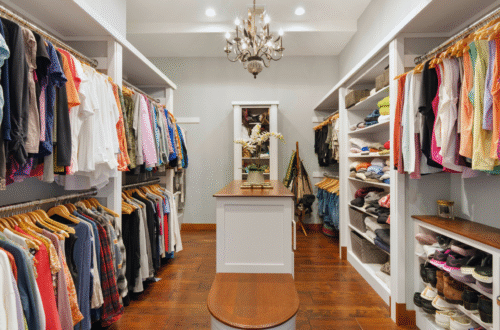
Types of Fashion Subcultures
The fashion industry is filled with subcultures. From trends that start online and cross over into the public to fan groups like goths and hippies, nearly every subculture has carved out its place in the fashion community. But what do they all have in common?
Fashion plays a major role in defining social identities, both for groups and individuals. Fashion, however, is a multifaceted and ever-changing industry. This means there is no single way to categorize and define fashion subcultures. It is hard for scholars even to define fashion subcultures, let alone study them.
What Are Fashion Subcultures
Fashion subcultures are an umbrella term for a group of individuals who gather around a certain trend. Fashion subcultures include anything from music fans to car collectors and anyone who wears a particular style of clothing. They share common interests that motivate them to come together.
Like fashion, subcultures come in different varieties and different eras. Subcultures run the gamut from punk to emo to grunge to goth to drum and bass, and even old-time rock n’ roll. Each subculture has its own special characteristics and style.
When most people hear the word ‘fashion,’ they think of the latest designer label and the flashiest trends. But fashion is so much more than just clothing. It also helps define and differentiate social groups: hipsters to goths, punks to preps, and urban streetwear to yoga clothes. Here are the types of subcultures.
- Goth – Goth fashion looks are inspired by Victorian and Edwardian fashion styles, which emphasize the clothing’s shape, structure, and color. These styles pair well with punk, the punk subculture. This style is marked by dark, mysterious, antiquated, homogenous, and often genderless features. It mostly consists of dark hair, lipstick, clothes, and funky accessories. For instance, people following this fashion trend may opt for wooden and stone rings, pendants, bolos, etc., from brands such as Sticks & Stones Jewelry to give the final touch to the outfit.
- Hip Hop – The fashions of Hip Hop reflect a subculture that values self-expression, individuality, and pride and has become a worldwide phenomenon. It can also be considered as a rapper fashion with loose ripped jeans, oversized tees, and shoes from Chuck Taylors. As for women, tight jeans, tank tops, tube tops, etc. can be considered the hip-hop fashion trend.
- Minimalistic – The minimalist fashion subculture has been gaining popularity lately. This specific subculture focuses on being simple, and minimal in all aspects of life. It simply means that you live a clean and clutter-free lifestyle. The minimalist fashion movement is often associated with companies such as anine bing, which tends to focus on creating timeless pieces that are designed to last. Brands like this have become a favorite of the minimalist fashion community that wants minimalist pieces that can be mixed and matched to create new looks.
- Grunge – Grunge fashion isn’t the same as it was in 1994. It’s hardly recognizable as grunge at all. The grunge phenomenon occurred during the early to mid-1990s, an era of excess and ennui. Grunge was an expression of this dissatisfaction with the decade’s music, movies, and fashion, with its prominent bands of flannel shirts, ripped jeans, and grungy hair.
- Bohemian -Bohemian is a fashion subculture that originated in Europe in the early 20th century. This usually refers to an individualistic, unconventional, anti-conformist, and individualistic lifestyle. Flowy embroidered dresses paired with boots, headscarves, and tarnish-free gold-plated jewelry take the spotlight.
- Rave – Rave subculture is an umbrella term for a series of electronic dance subcultures. The rave subculture emerged as a response to perceived societal changes in youth culture in the 1990s. Neon clothes and accessories could be a few items that become trendy through rave fashion.
- Emo – Emo often consists of bright colors, with darker or muted colors as accents. This fashion usually doesn’t contain wear much jewelry, instead opting for more graphic or abstract pieces. People following the Emo trend usually cut their hair short, wear black eyeliner, and have long nails and mascara.
- K-Style – K-Style is a form of a fashion subculture that emerged in Korea in the late 1990s. K-Style fashion uses bright colors, cartoon characters, and pop culture symbols. As more women in South Korea are joining the workforce, K-Style fashion is moving outside of the country. As of now, current trends in the K-Style industry also includes K-Pop as a significant part of its influence, thus making many merchandising sites like https://kplaceshop.com/ and similar, include the styles and trends as part of their products.
- Punk – Punk is one of those terms that can conjure up a lot of different ideas, depending on where you’re from. In the US, punk is often associated with a certain type of youth subculture or with certain types of music.
- E-Boys & E-Girls – The subcultures of E-Boys and E-Girls are typically associated with two different types of fashion. E-Boys are the folks that wear vintage, second-hand, or thrift clothing. E-Girls, on the other hand, tend to wear newer pieces of clothing that have been modified in some way.
There are hundreds of different fashion subcultures, but do you know which ones you’re a part of? From hippies to punks to hipsters and everything in between, there’s a subculture for almost every personality type. And even if you don’t consider yourself a fashionista, you can still be a part of the subculture.




